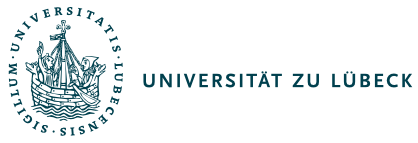Duration:
2 Semester | Turnus of offer:
each semester | Credit points:
12 |
Course of studies, specific field and terms: - Master IT-Security 2019 (optional subject), Elective Computer Science, 1st or 2nd semester
- Master Entrepreneurship in Digital Technologies 2020 (optional subject), technology field computer science, 2nd or 3rd semester
- Master Computer Science 2019 (optional subject), advanced module, Arbitrary semester
|
Classes and lectures: - Architectures for distributed communication systems (practical course, 3 SWS)
- Mobil communication systems (exercise, 1 SWS)
- Mobil communication systems (lecture, 2 SWS)
- Architectures for distributed communication systems (exercise, 1 SWS)
- Architectures for distributed communication systems (lecture, 2 SWS)
| Workload: - 45 Hours group work
- 45 Hours exam preparation
- 45 Hours work on project
- 105 Hours private studies
- 120 Hours in-classroom work
| |
Contents of teaching: | - Introduction to Communication Systems and overview of the state-of-the-art technologies
- Wireless Data Link Layer, Network Layer and Technologies (802.15.4, WLAN, GSM, Bluetooth, RFID, LowPowerWANs, Broadcast and Satellite Systems)
- Security in wireless Networks
- Applications of wireless Networks
- Software Architectures
- Basics of communication in distributed networks
- N-Tier Applications
- Architectures of distributed systems (Service-Oriented and Event-Driven Architectures (SOA and EDA), Web-Oriented Architectures (Web 2.0), Overlay Networks, Peer-to-Peer, Grid and Cloud Computing, Internet of Things)
| |
Qualification-goals/Competencies: - Students can highlight the particularities of wireless mobile communication systems and the challenges and concepts.
- They interpret and follow current research activities and technology trends.
- They can systematically design and evaluate protocols for mobile communication systems and their applications.
- They can design, implement, and operate real-time applications based on wireless communication networks.
- They can analyze technical requirements for mobile radio systems and components and choose solutions.
- They can carry out diagnoses, tests and optimizations of wireless networked mobile communication systems.
- The students are able to name the most important archiectures for distributed systems, explain them, and compare them to each other.
- For each architecture, they know the most prominent and important implementation platforms and basically know how to use them.
- For a given problem, they can analyze which architecture is best suited to solve it, and they can design a plan for the solution's realization.
|
Grading through: |
Responsible for this module: Teachers: |
Literature: - Jochen Schiller: Mobile Communications - 2nd Edition, Addison-Wesley, 2004, Signature: VK 2650 2005 A 302
- Andrew S. Tanenbaum: Computer Networks - 4th Edition, Prentice-Hall, 2003, Signature: VK 1670 2004 A 823
- Charles E. Perkins: Ad Hoc Networking - 1st Edition, Addison Wesley Professional, December 2000, Signature: VK 1670 2002 A 640
- J. Dunkel, A. Eberhart, S. Fischer, C. Kleiner, A. Koschel: Systemarchitekturen für verteilte Anwendungen - Hanser-Verlag 2008
- I. Melzer et.al.: Service-Orientierte Architekturen mit Web Services - Spektrum-Verlag 2010
|
Language: - English, except in case of only German-speaking participants
|
Notes:Admission requirements for taking the module:
- None
Admission requirements for participation in module examination(s):
- Successful completion of the project internship
Module Examination(s):
- CS4517-L1: Architectures for Distributed Communication Systems, oral exam, 100% of module grade.
According to the decision of the Examination Board for Computer Science of 17.7.2020, this module can be chosen as a specialization module for Master Computer Science. |
Letzte Änderung: 24.10.2022 |



















für die Ukraine